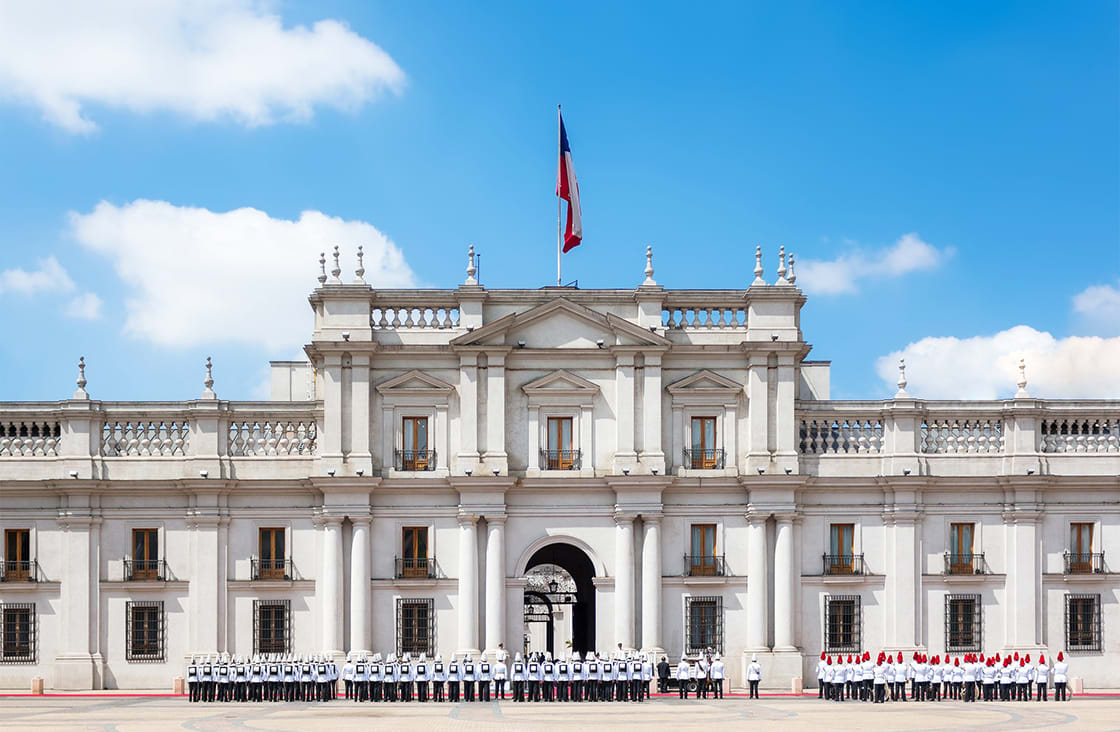
Chile is a country of extremes; its long and narrow shape can make traveling the country a little challenging, so embrace the slow adventure, take your time and open your heart and mind to experiencing the moment. From the driest desert in the world in the north to windswept wilderness and glaciers in the south. This Patagonian country is a rich tapestry of mountain and plain, jungle and ocean. The country also has a well-known wine region that attracts many oenophiles each year. Here is a look at some of the best places to visit in Chile:
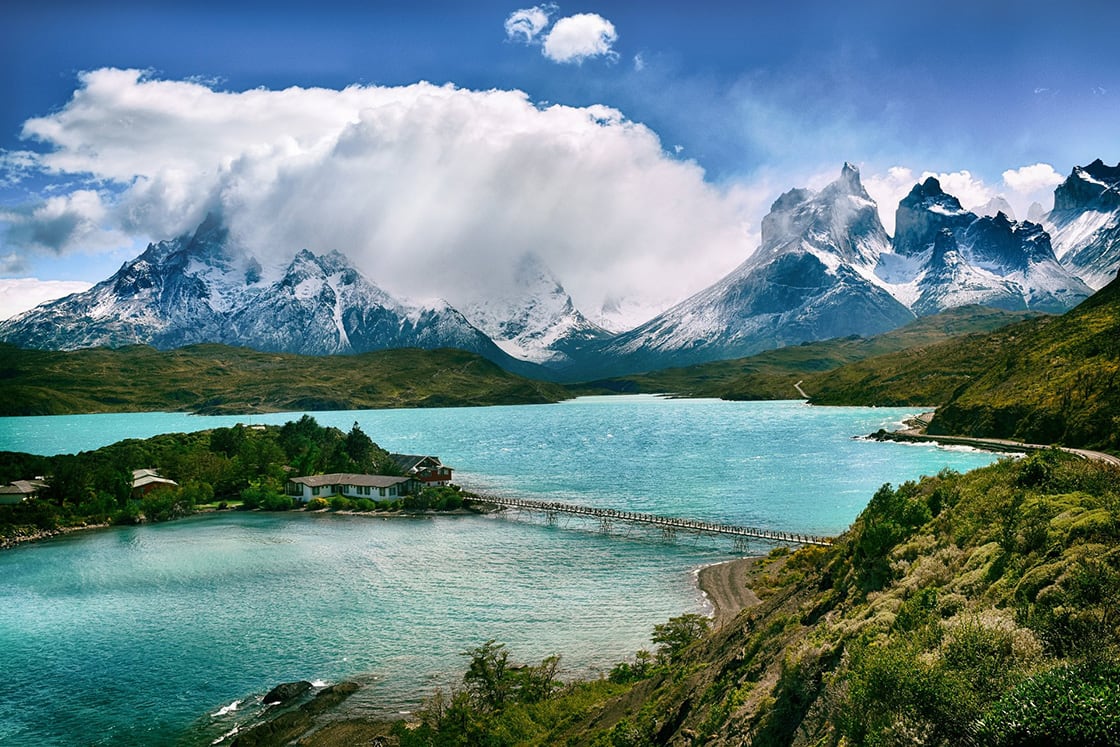
Patagonia, Chile
A bewitching highlight of any Chilean adventure is cruising through the spectacular windswept fjords on the “edge of the world” at the southern tip of Patagonia. Spellbindingly beautiful, this vast isolated network of navigable fjords, open channels, narrow inlets, and a splendid coastline winds its way to the end of the Earth. The fjords are flanked by lush green cliffs, steep rugged shores, and creaking glaciers as tall as skyscrapers, which reach down from the Darwin and Andes Mountains to calve majestically into the icy waters below.
Wildlife is abundant here, with whales puncturing the surface for air between dives for meals, sea lions barking on the rocky outcroppings, birds swooping and swirling around the ships, and vast colonies of penguins filling many of the beaches. Most of the trips start from Puerto Montt and travel towards Carretera Austral, Laguna San Rafael, and Puerto Natales.

Licancabur & Juriques Volcanos At The Moon Valley, Atacama Desert
Set high on a plateau, San Pedro de Atacama is a small Spanish colonial town in the Atacama desert, the driest desert in the world, in the Antofagasta Region of Chile. It is surrounded by awe-inspiring scenery of mountains, lakes, and rock formations. From the center of town, you can easily arrange a trip to visit the incredible Atacama Desert or any one of the impressive pre-Columbian archaeological sites and ruins that lie nearby.
Among the region’s many highlights are the otherworldly Valle de la Luna and Valle de la Muerte, where you can see extraordinary rock formations, lunar-like depressions, and pink-striped mountains. Piedras Rojas is an incredible area of red stones surrounded by salt-water lagoons and clay-colored volcanoes. Be sure not to miss the Tatio Geysers, a mountain valley full of cauldrons of rising steam, which spurt high up into the air.
In addition to this, there are also the pink flamingos at Laguna Chaxa to visit as well as the ancient petroglyphs at the rainbow valley. At Laguna Escondidas, you’ll find a series of dazzling blue lagoons. You can swim in the refreshingly cold water which is sometimes even saltier than the Dead Sea. The big draw here is the night sky as it is one of the darkest places in the world. All you have to do is step outside and look up, but if you want to learn more then take a stargazing tour to discover the different constellations, planets, and galaxies above. If you can, time your visit to coincide with the new moon and you will be rewarded with supreme views of the Milky Way.
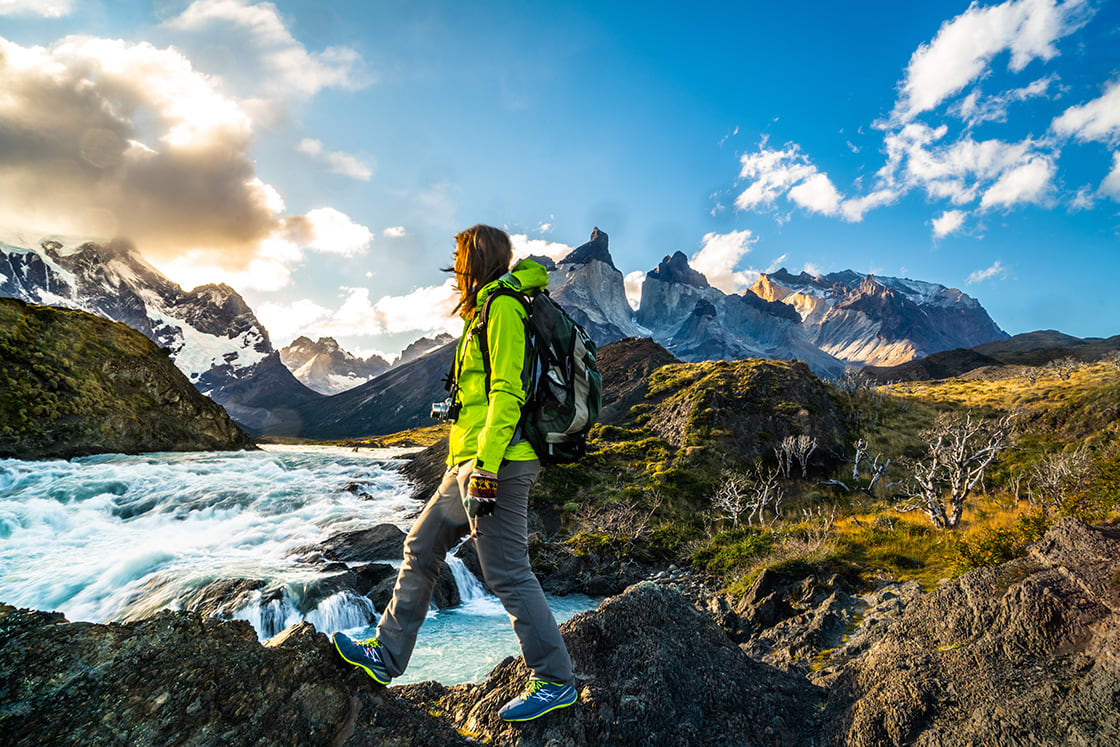
Torres Del Paine National Park Moutain Landscape
The Torres del Paine is the picture-postcard image of Chile. Located right in the south of Patagonia near the town of Puerto Natales, this park is probably one of the most beautiful national parks in the world, delivering stunning scenery of glaciers, lakes, mountains, and rivers. The Paine mountain range is the heart of the park, features a trio of spectacular granite summits, rising more than 8,200 feet over the Patagonian steppe and looming over a lagoon. The hiking trails here are without a doubt the most famous in Patagonia.
You’ll cross rickety bridges over rushing rivers and trek past ancient forests and glaciers, jagged peaks, freezing glacial lakes, and wild windswept scrublands. You’ll see Andean condors, flamingos, rhea, and more. Be sure to keep an eye out for vicuña, a local llama-type animal. If you’re lucky, you might spot guanaco, the endangered huemul, and pumas.
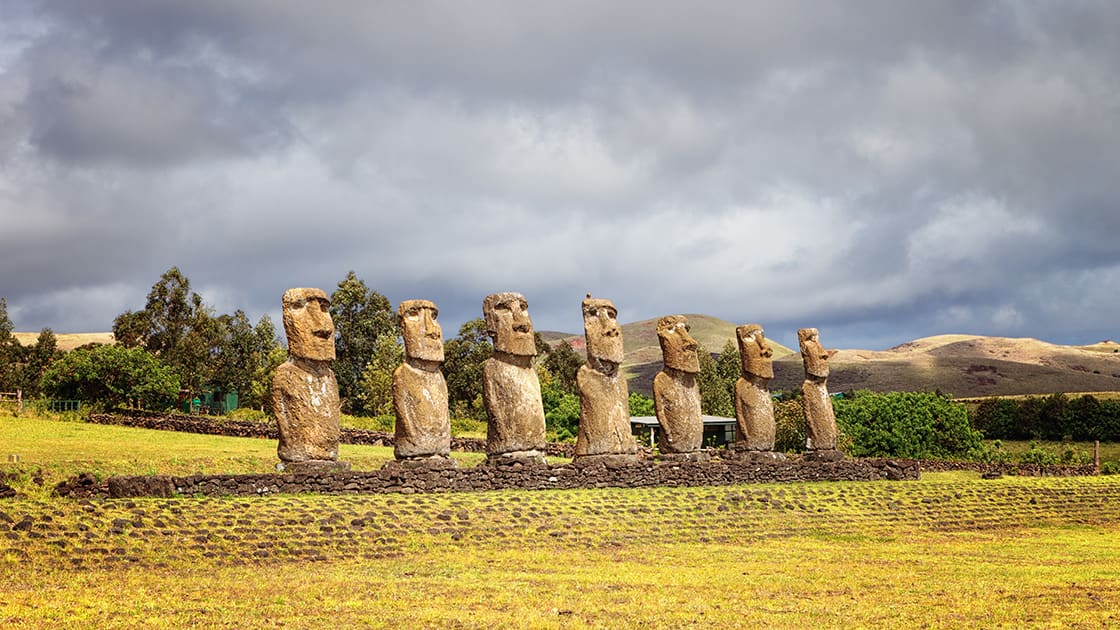
Ahu Akivi was the first restored, Easter Island
Located more than 2,000 miles from central Chile, Easter Island continues to be one of the world’s greatest mysteries. It is the most isolated inhabited island in the world, and this isolation has helped preserve its biggest claim to fame – the 1,500-year-old mysterious congregation of volcanic rock sculptures, “moai”, with their giant, hollow-eyed, gaunt faces, some weighing 75 tons. All told, 887 of these statues, created by the island’s early Rapa Nui population, have been identified, with most of them now protected by Rapa Nui National Park. The most impressive collection is at Ahu Tongariki, where 15 of them have been re-erected on the island’s largest Moai platform, or “ahu.”
Besides visiting these statues from a respectful distance and hiking the rocky plains, you can enjoy two white sand beaches with off-coast diving and an extinct cinder cone. Also of interest are the many “hare paenga” ruins near ahu sites consisting of stones that once formed the foundation of boat-shaped houses. Other highlights include the Father Sebastian Englert Anthropological Museum in Hanga Roa, the island’s main community, notable for its exhibits relating to the history of the Polynesian islanders and their traditions.
Stretching for more than 200 miles from Temuco to Puerto Montt, the Chilean Lake District is well worth exploring. This long, lush volcanic valley region stretches from Puerto Montt in the South to Temuco in the North. It is home to dense alerce (larch) forests, dozens of crystalline mountain lakes, hot springs, rivers, waterfalls, and six volcanoes capped with snow. If you’re an adventure seeker, a typical Chilean Lake District itinerary includes hiking and biking, volcano climbing, white water rafting, kayaking, canoeing, and horse riding as well as skiing in the winter.
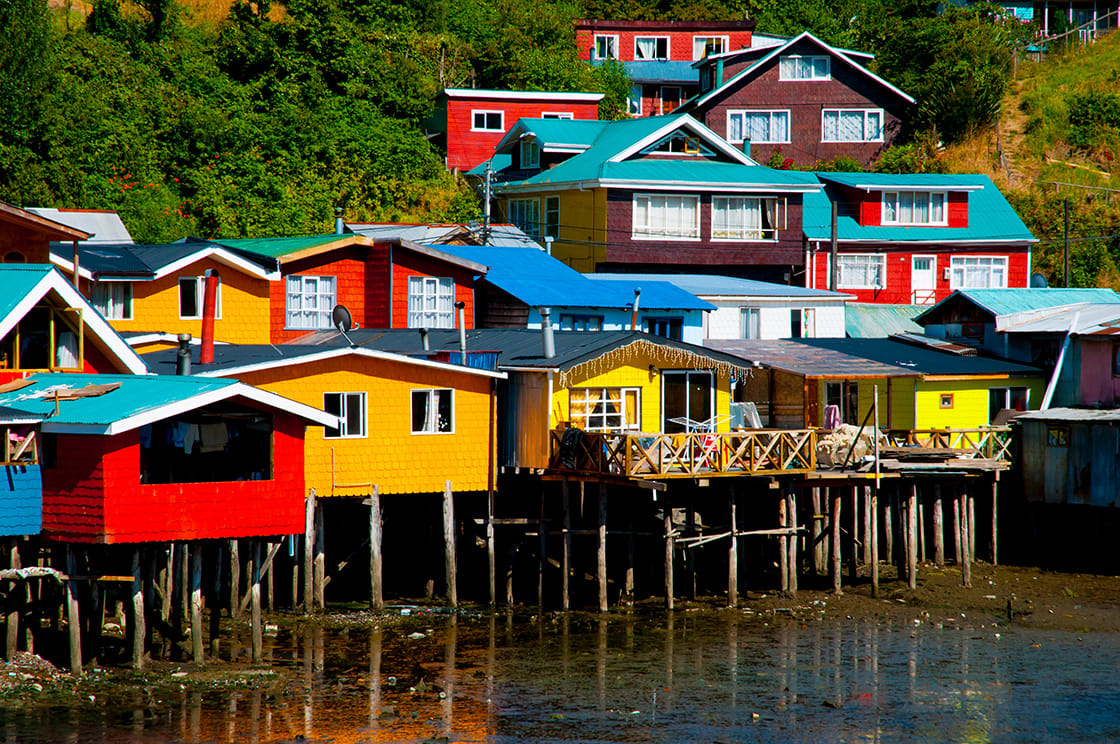
Chiloé Island, in southern Chile. It’s home to pastoral landscapes and known for its iconic wooden buildings
A land of legends, folklore, and culinary traditions, Chiloe Island is one of the best places to visit in Chile. The country’s largest island is a melting pot of local culture. The Spanish who arrived in the 16th century, and the Jesuit missionaries who followed, constructed hundreds of wooden-shingled churches in an attempt to bring Christianity to the archipelago. Over the centuries, Chiloé’s seafaring people have woven myths and legends that blend indigenous lore with Catholic beliefs to create a rich brew of ghost ships, mermaids, goblins, and witches.
Here you can enjoy Chiloe’s fascinating folklore, fresh seafood, colorful wooden houses on stilts, impressive churches, national parks, and more. You can take trips in traditional wooden boats, go kayaking around the rocky shores, visit the two national parks, which are bursting with wildlife, hike or take to the trails by bike, or horse ride around the island’s scenic landscapes.
While Rainforest Cruises aim to provide accurate and up-to-date information, we make no representations as to the accuracy or completeness of any information herein or found by following any link on this site. Rainforest Cruises cannot and will not accept responsibility for any omissions or inaccuracies, or for any consequences arising therefrom, including any losses, injuries, or damages resulting from the display or use of this information.




